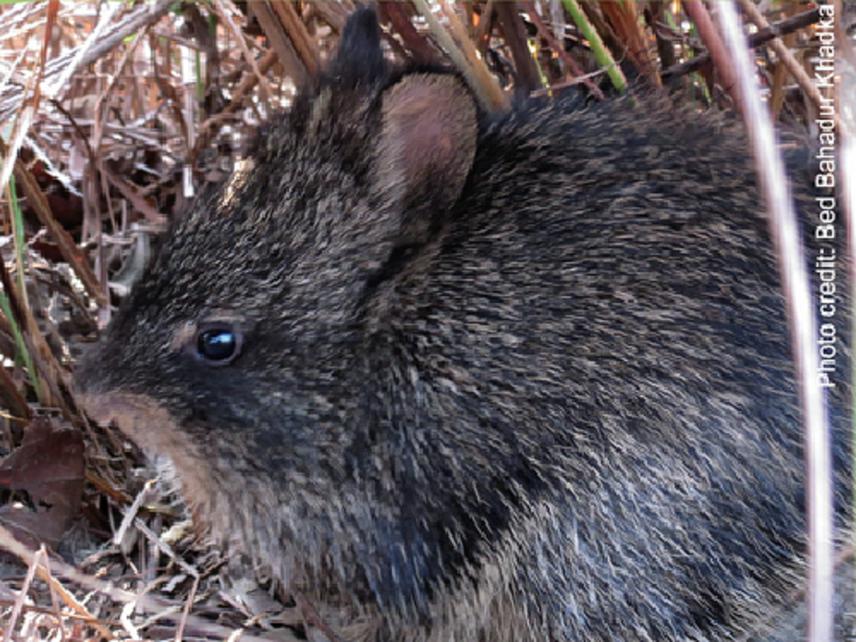Pratichhya Shrestha
Knowledge on status and distribution of Hispid Hare (Caprolagus hispidus Pearson, 1839) is always been limited. This will be the first specified study on the Hispid Hare which will be the basement for the national and global actions toward the conservation of this species. This project aims to explore the baseline information of the species and establish the sustainable conservation awareness practices in the locality. Status, distribution, habitat preference and habitat use of Hispid Hare will be known which forms the baseline information for the further research work. Furthermore, potential threats for Hispid hare will be explored and increment in awareness level and long term conservation initiatives will be made. Moreover, alternative appropriate grassland management strategies will be identified.

© Bed Bahadur Khadka.
Hispid Hare (Caprolagus hispidus Pearson, 1839) is globally endangered B2ab-(ii, iii, v) small mammal species which are always been in the top priority of conservation concern. But such priority is underappreciated toward the species for their population assessment and conservation in Nepal. Although the species is supposed to occur in fragments and remnant habitats of different protected areas of Nepal and Chitwan National Park (CNP) is one among them (Khadka et al. 2017). Shifting their habitat to the cultivated fields after grassland burning and due to the confusion with house mouse, farmers are using poison in the field to control crop loss by the species. Moreover, other activities like fodder collection, human pressure in the park and unplanned grassland burning is pushing the species toward extinction. This will be the first specified study on the Hispid Hare which will be the basement for the national and global actions toward the conservation of this species.
CNP is the oldest National Park of Nepal situated in the south central part of the inner terai in the lowlands of Nepal. The area is dominated by species such as Dalbergia sissoo, Accacia catechu, and Bombax ceiba (Rijal, 1994; KMTNC, 1996). Grasslands cover 20% of the area (Mishra, 1982). More than 50 species of grasses including some of the world's tallest grasses like the elephant grass (Saccharum ravennae), giant cane (Arundo donax), khagra seed (Phragmites karka), Kans grass (Saccharum spontaneum) are found in the grasslands of CNP (Shrestha and Dangol, 2006). The park is the home to 50 species of mammals, 526 species of birds, 49 species of reptiles and amphibians, and 120 species of fishes (DNPWC, 2000).
Pellet count method and camera trap method will be used for the assessment of status and distribution of the species. Habitat assessment will be done by using quadrate sampling method. Dependency and willingness of the local community will be assessed by the questionnaire survey. Moreover, several community outreach programmes such as focus group discussion, radio awareness programmes, school programmes and poster distribution will be carried out to raise the awareness level of local community towards the Hispid Hare. Therefore, the project ensures the sustainable conservation of the Hispid Hare in CNP and its buffer zone through awareness campaign.